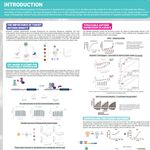Continuous Professional Development (CPD) in Laboratory Animal Science, a continuous improvement in animal welfare and science
-
Patri Vergara, DVM, PhD, DipECLAM
Professor, University Autonomous of Barcelona, USABIOGRAPHY
DATE: February 9, 2017
TIME: 6:00am PT, 9:00am ET
There is no professional area in which CPD is more necessary than in the field of laboratory animals. The continuous advancement of science provides us with continuous opportunities to improve our performance, improving both the welfare of the animals and the scientific achievements obtained with them.
CPD must not only be a priority for high qualified professionals such as veterinarians or scientists but for all categories of personnel. Some countries, such as those in the European Union, have made CPD in Laboratory Animal Science (LAS) compulsory in order to maintain the competence of personnel working with animals. Several systems to recognize CPD have been developed by some organizations, such as the Federation of European Laboratory Animal Science Associations (FELASA).
One characteristic of a CPD recognition system must be flexibility and adaptation to each person's needs and career. To this end, a diverse variety of educational activities must be included in CPD, for instance, attending a scientific meeting in the field of interest, participating in a course, but also learning new techniques that will allow us to refine our performance.
Due to this diversity, CPD recognition presents some difficulties in the validation and harmonization of systems. However, all of them require that each person is aware of the need to keep records for all CPD activities. A personal CPD port-folio needs to include: basic training records, such as basic courses in LAS, attendance at scientific meetings and a record of new techniques learned with dates and a validation signature. In the session some examples for keeping CPD records will be given.
For veterinarians there are several international recognized programs providing both LAS specialization and CPD. The Laboratory Animal Medicine Colleges in America, Asia and Europe and most recently the VetCEE LAS & Medicine program in Europe, require a 5 year CPD re-evaluation to keep the Specialist status.
Learning objectives:
- To be aware of how CPD is important for all categories of personnel working with experimental animals and how CPD can be recorded and evaluated by several organizations around the world.
- To be familiar with some of the Specialization and CPD international programs for veterinarians.
Sponsored By: Thermo Fisher Scientific
Continuous Professional Development (CPD) in Laboratory Animal Science, a continuous improvement in animal welfare and science
Please update your information
Certificate of Attendance
DOWNLOAD CERTIFICATE





